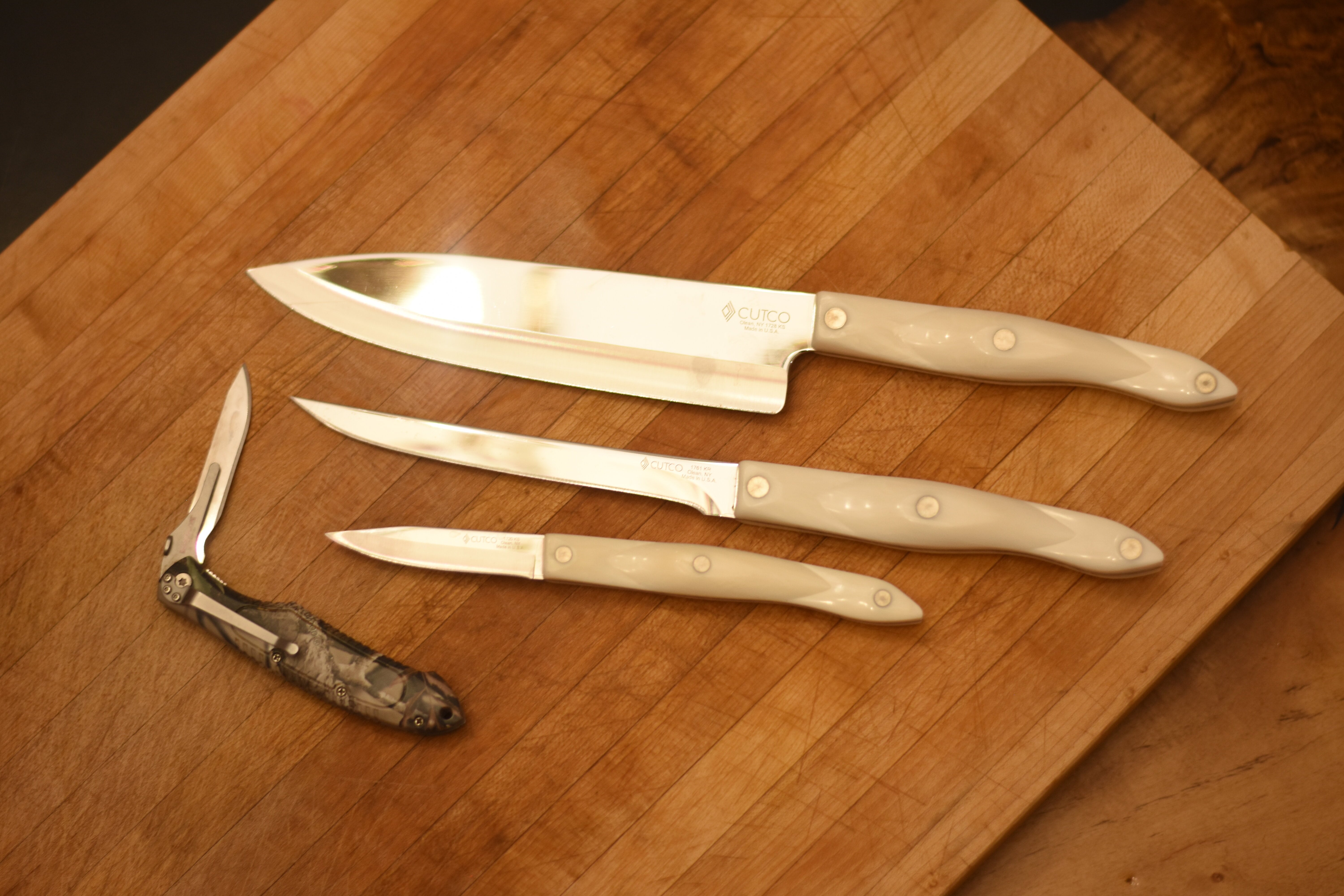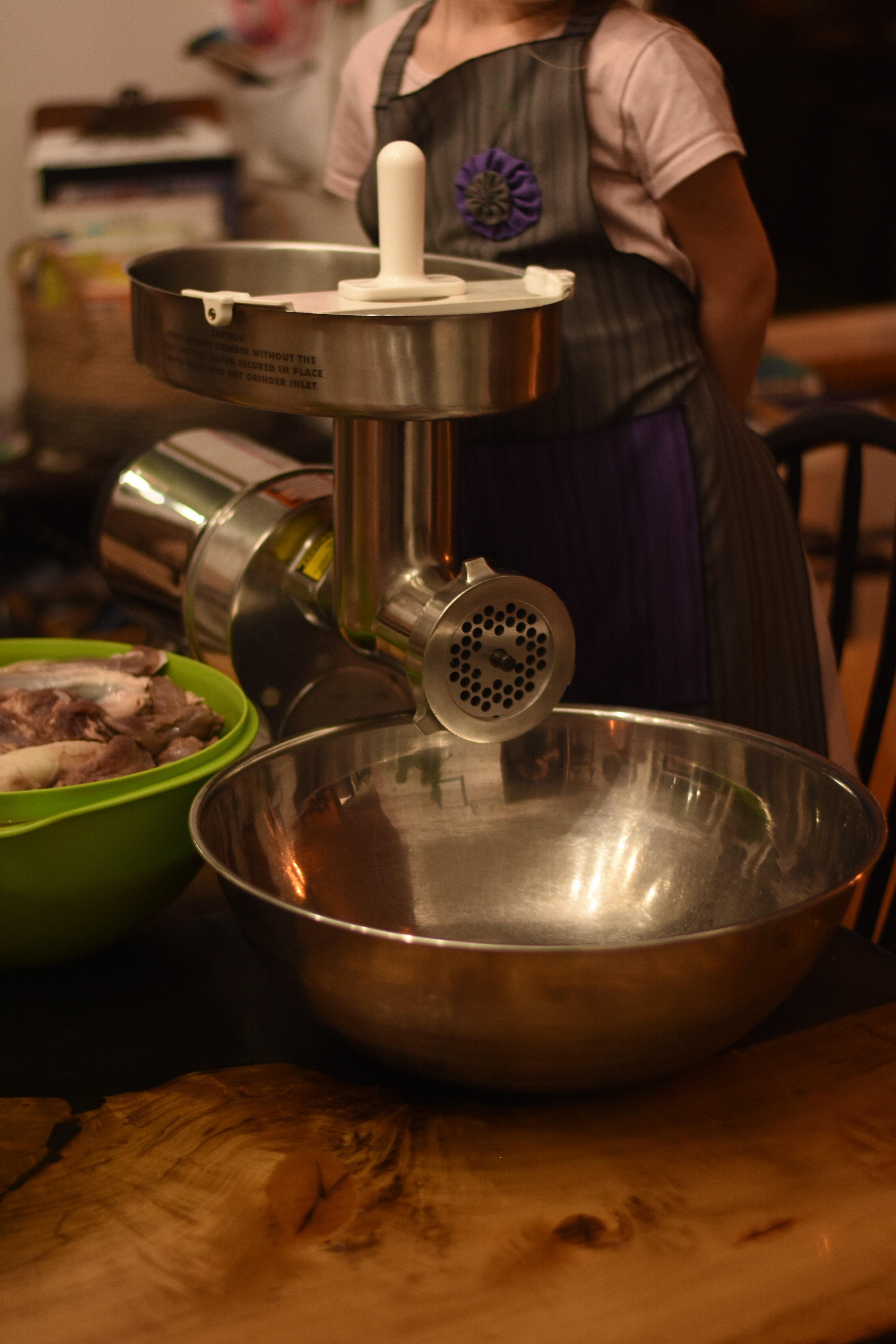
A Quick Guide to Meat Processing & Curing
By: Plain Direct
December 4th 2023, 12:00:00 am
Processing and curing meat from your homestead or hunting expeditions are great ways to save money on delicious, flavorful cuts of meat. There are many regulations surrounding meat and wild game processing that do not apply when the meat is for yourself and your family. To simplify things for homesteaders and hobbyist hunters, this blog will focus on meat processing and curing for personal use.
Proceeding with Cutting
Once an animal has been killed and bled, it’s time to start processing the meat. To keep the meat from spoiling, keep the animal’s carcass and any cut meat refrigerated or hung in an area that’s at least 32 degrees Fahrenheit. When processing meat, always ensure you have a proper setup or choose a trusted and licensed meat processing business to do it for you.
Set Up a Clean Workspace
 When cutting meat, your hands, gloves, clothes, and workstation should be clean to prevent contamination. The following equipment and accessories are essentials for your personal meat-cutting station:
When cutting meat, your hands, gloves, clothes, and workstation should be clean to prevent contamination. The following equipment and accessories are essentials for your personal meat-cutting station:
- Boning hooks
- Cutting boards
- Boning knife
- Butcher knife
- Meat cleaver
- Meat saw
- Clean, food-safe pans and buckets
- Meat grinder
Likewise, it’s important you have a sanitary workspace that’s well-ventilated and dust-free. You’ll also want to choose a space that doesn’t have any strong odors, such as manure, oil, paint, or gasoline, as these smells can be easily absorbed into carcasses.
Packaging & Wrapping Meat
Freezing fresh meat gives you access to it all year and saves you money at the grocery store. When freezing meat, the wrapping material you choose makes a difference. For instance, you don’t want to use freezer bags or containers as they aren’t equipped to maintain the flavor and moisture of meat. To store meat in the freezer, you’ll want to use moisture-vapor-proof wrapping that can maintain the taste and moisture of your fresh cuts.
Just as the type of packaging is important, the way meat is wrapped for storage matters as well. You want to wrap meat in a way that keeps air out and prevents loss of moisture. To do this, many people recommend the popular “drugstore wrap”, which keeps meat fresh. When wrapping fresh meat to be frozen, make sure all the air is removed from the package. Frozen meat that’s not properly wrapped or has holes in the packaging can let air in and make the meat lose its flavor. Improper wrapping can also dry out the meat and lead to freezer burn. Once the meat has been properly wrapped, label each package with the meat’s type, cut, amount, and packaging date.
 Using a Vacuum Sealer
Using a Vacuum Sealer
Homesteaders and hobbyist hunters who regularly process meat for their households may find vacuum sealers are excellent additions to their meat processing kits. Vacuum sealers can speed up the packaging and storing process while reducing any risk of wrapping errors. This equipment is also good for maintaining the quality of frozen meat. In addition to preventing freezer burn and loss of moisture, a vacuum sealer is a great way to ensure your frozen meat doesn’t lose nutrients or flavor over time.
Organizing Meat in Freezer
According to experts in food safety, fresh meat shouldn’t be stored in a freezer for longer than 12 months. Whenever you add additional meat to your freezer, take some extra time to rotate existing cuts. Do this by bringing older cuts to the front or top and placing newer cuts at the back or bottom of the freezer. Rotating frozen meat based on dates will prevent cuts from getting buried and later wasted.
Meat Curing
Curing meat helps preserve cuts, keeps away bacteria growth, and reduces the risk of food poisoning. Curing is also used to enhance a cut’s color and create more flavor. While curing meat is often associated with fresh meat, it can also be done with frozen meat that’s been properly thawed.
Curing Mixes
 Salt with nitrites or nitrates is an essential ingredient in curing. Salt draws moisture out of meat cuts while sodium nitrate or sodium nitrite prevents bacteria growth. Including nitrate or nitrite is important as salt alone cannot stop bacteria growth. These are the ingredients in curing mixtures that protect you and your family from food poisoning. You can find curing salts in many stores that combine salt and sodium nitrite or sodium nitrate into one mixture to save time on measuring ingredients.
Salt with nitrites or nitrates is an essential ingredient in curing. Salt draws moisture out of meat cuts while sodium nitrate or sodium nitrite prevents bacteria growth. Including nitrate or nitrite is important as salt alone cannot stop bacteria growth. These are the ingredients in curing mixtures that protect you and your family from food poisoning. You can find curing salts in many stores that combine salt and sodium nitrite or sodium nitrate into one mixture to save time on measuring ingredients.
In addition to salt, the following spices and seasonings can be added to your curing mix:
- Sugar
- Paprika
- Garlic
- Black Peppercorn
- White Peppercorn
- Green Peppercorn
- Coriander
- Thyme
- Mustard Seed
- Fennel Seed
- Citrus Zest
- Star Anise
Many stores sell meat curing mixes that are already premade with various seasonings and spices. You can get creative with your seasonings, find recipes online, or try some from a small business near you! While there are various curing methods used to preserve and flavor meat, dry curing and wet curing are two popular methods still used today.
Dry Curing

Dry curing is done by rubbing an excess of curing mix over the meat’s surface. The meat is then placed in a refrigerator or meat curing chamber at 35 to 40 degrees Fahrenheit to cure for weeks or months, depending on the mixture, type of meat, and weight. Once your dry-cured meat is done you should rinse off extra salt on its surface to reduce its saltiness.
Wet Curing
Wet curing involves combining your curing mix and water inside a large container, or brining bucket, that can fully engulf the meat in the curing mixture. This method doesn’t take as long as dry curing and is less salty. The wet curing method is best used for small cuts of meat. When wet curing smaller cuts of meat, you can expect the process to take a few days to 2 weeks depending on the sizes. Just like dry curing, wet curing should be done at 35 to 40 degrees Fahrenheit. No matter the curing method used, if the meat begins to smell rancid or rotten at any point in the curing process, throw it out.
Want to find equipment to set up your own meat processing and curing workstation? Browse listings on Plain Direct to find the tools you need to get started.
Share:
Tags:
No tags yet.